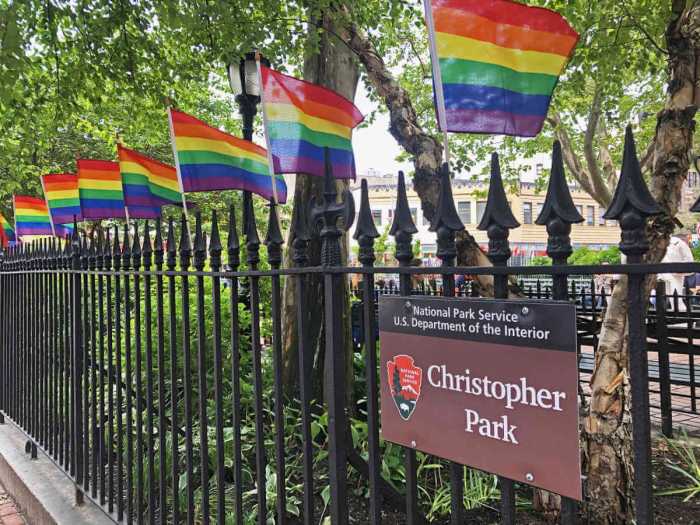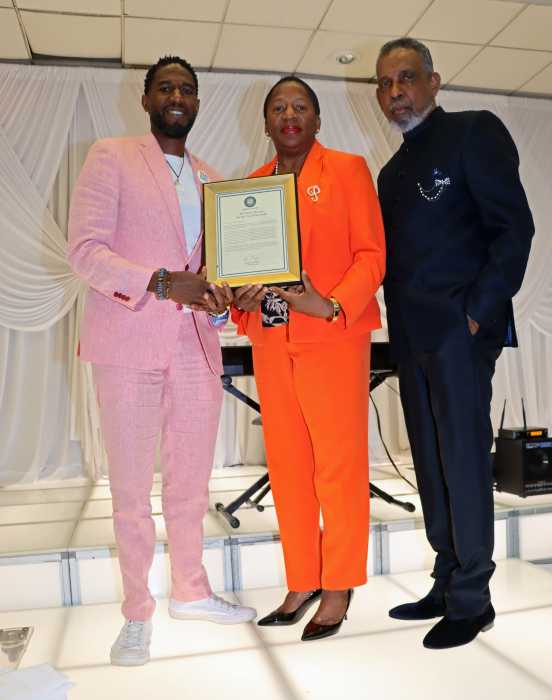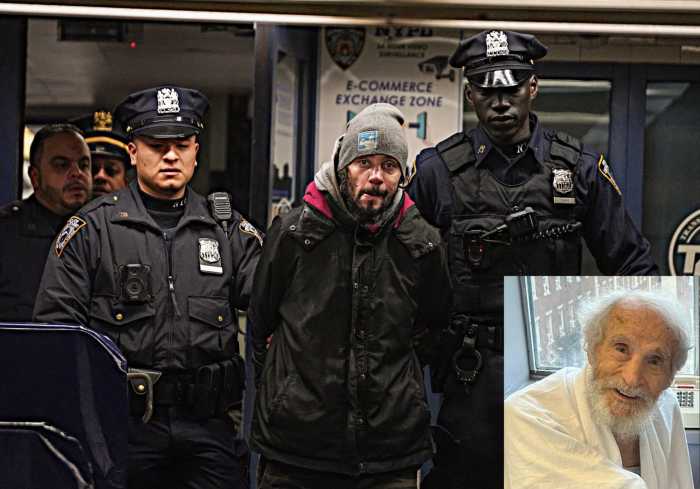From Albee to Angelou, how New York voices shaped the nation’s artistic consciousness
THE BALLAD OF GREENWICH VILLAGE
Directed by Karen Kramer
narrated by Lili Taylor
Opens July 22
Quad Cinema
Edward Albee sits on a park bench in Greenwich Village and says, “I’d read about the Village, how bohemian it was, and after getting thrown out of college, couldn’t wait to get here.”
Norman Mailer, at his ease in the White Horse, thinks back to his boyhood in Brooklyn in the 1930s: “Our one idea above all was to get laid. The mecca for that was Greenwich Village. It had a wonderful patina. I got to the Village in 1955. One of the ironies of today is that unless you’re pretty high up in the bourgeois world, you can’t afford to live in Greenwich Village.”
Mailer talks of E.E. Cummings, John Dos Passos, William Faulkner, Hart Crane, Theodore Dreiser, Sinclair Lewis and Mark Twain.
Tim Robbins sits on a stoop on St. Luke’s Place and says, “What astonishes me about growing up in Greenwich Village” on King Street, “is that I’d be walking down the street with my baseball glove going to play softball, and I’d be walking next to Allen Ginsberg or Bob Dylan.”
Steve Schlurak, bartender at Chumley’s, points out Table 8, where Scott and Zelda Fitzerald are reputed to have consummated their romance.
Woody Allen looks back to his start in Village clubs like the Comedy Cellar and The Village Gate (where this journalist first saw him): “You always had an audience and they were good ones.”
Lorraine Gordon in the Village Vanguard talks of her husband Max – “This was his salon, his living room”––and of Dinah Washington, John Coltrane, Miles Davis, Yul Brynner, Charlie Mingus breaking down the door, Bill Evans “looking like a wounded bird.”
Roy Haynes talks of playing with Charlie Parker and Art Tatum at Café Society Downtown, and of Billie Holiday, in that basement at Two Sheridan Square.
Maya Angelou sits on a stoop in North Carolina and talks of her middle-class background, her early reverence of poets, and of how “when I got to the Village I felt like Br’er Rabbit in the briar patch… home at last, home at last.”
Another Maya, the great filmmaker Maya Deren, you won’t see in this film, because she is long gone, but if you look sharp, you may catch a glimpse of her as the camera pans past a wall of book jackets at Chumley’s.
It was in fact the legacy of Maya Deren, in particular her golden glorious “Meshes of the Afternoon,” that inspired Karen Kramer, the first time she saw “Meshes,” back in college in Denver, Colorado, to become a filmmaker herself.
The climax to a full career of almost 30 years in that line––well, the climax––so far––is an evocative, informative 70-minute documentary, “The Ballad of Greenwich Village,” more than a dozen years in the making, that’s on its way to the Quad Cinema on 13th Street.
Allen Ginsberg you won’t see (except in beautiful photos of him as a very young man) because he died just before Karen Kramer could get him on camera.
“I’d had a preliminary meeting with him,” she said. “A very generous guy. He talked about Walt Whitman and other poets. It was when Allen died”––in 1997––“that I took whatever little money I had and began to interview people, beginning with the folksingers.” (There’s also some strong, frantic footage of cops manhandling folksingers and listeners in the 1960s in Washington Square.)
“When I met with Richie Havens in front of the Bitter End, some nearby construction was making a lot of noise. Richie asked the construction workers to stop, and they all did. After the interview he went up to each of them and shook their hands.”
Two things account for the length of time this project has taken come to fruition: “One, to raise the money, and two, because I’m such a thorough researcher. Even before I interviewed Norman Mailer, in December 1999, I went and read all his books.”
All of them?
She moved her hands in an “oh, well” gesture.
“Some I skimmed through. But I read all his nonfiction. And with Edward Albee, I read everything. I hope people get the symbolism of Edward being interviewed on a park bench”––a visual reference to the whereabouts of “The Zoo Story,” Albee’s first produced play.
“I did not think the funding would come easily,” she said. “But beyond that came the problem of how to take this enormous amount of material and put it”––shaping the figure with her hands––“into a funnel.
“It kills me, all the stuff I couldn’t put in. Gertrude Vanderbilt Whitney’s studio on Eighth Street. Eddie Condon’s on Third Street. Pfaff’s Beer Hall of the 1850s. Charles Pfaff, a German immigrant, was America’s first bohemian. And on and on and on. All the artists and writers. Every writer passed through Greenwich Village.
“I began to see that certain things have to stand for everything, like Café Society for jazz. You know, some people hated Café Society because it was interracial. They’d throw tomatoes at the customers.”
Karen Kramer had been making movies about other places, other cultures––including Maya Deren’s Haiti––since 1977, when one day, standing in line in a grocery store on Bleecker Street, she got chatting with an 87-year-old woman who started telling anecdotes about all the wonderful people she’d known in the Village.
“I never saw that woman again, but I thought I really should document some of these people before it’s too late. Maybe I would tell the story of Bleecker Street. Then, when I began research, I saw how far back Bohemia goes in Greenwich Village––back past the hippies, back past the Beats, back past John Reed…
“The more research I did, the more it got like one of those Russian dolls within a doll within a doll. I had a very logical plan. I would raise the money, do the research, write the script, start shooting.
“It didn’t work like that. A whole other component was getting the archival material. A task so labor-intensive, working with the Museum of the City of New York, the New York Public Library, the Library of Performing Arts, also with private collections.
“There are at least 120 stills in the film, but it’s not just finding the stills. You have to get the rights––and that’s not easy. And once you’ve got the photo and once you’ve got the rights, then you have to make the photo compatible with the editing process––and that’s a nightmare.
“And there’s a third component,” said the filmmaker. “I wanted some neighborhood people to be in this––like Jean Murai, for instance, that elegant lady in a red suit. She used to be a folksinger; she’s also an activist, interested in human rights. I first met her at a protest meeting against something NYU was doing. She called the other day and said: ‘Karen, when’s my movie opening?’”
It’s opening July 22 at the Quad, and Leroy Street resident Karen Kramer, who as a young woman made a beeline for the Village from where she’d grown up in the suburbs, hopes that all Greenwich Villagers will be proud of it.
“I will die,” wrote Edna St. Vincent Millay, “but that is all I will do for death.” This documentary seconds the case.
gaycitynews.com



































